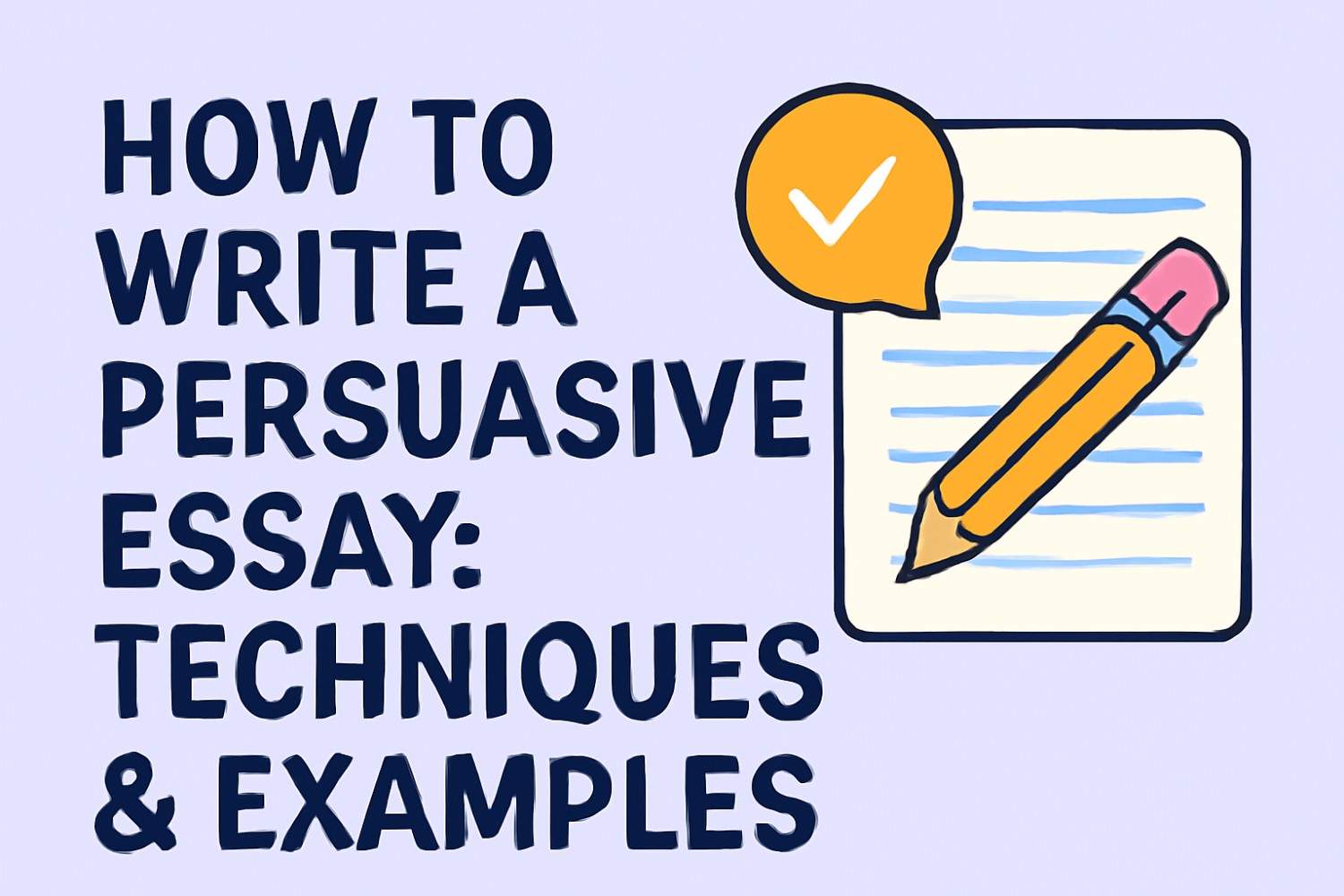A persuasive essay isn’t an easy endeavor to accomplish. However, some strategies, along with examples, can make the job simpler. The purpose of a persuasive essay is to convince a reader of thinking as well as doing a thing. To achieve this, you’ll be expected to write an argument that is persuasive and backed by solid evidence and should be arranged logically. This essay will examine the fundamentals of persuasive writing. It will also review the most effective essay writing concepts and provide examples of how you can learn the craft of persuasive writing.
What are Persuasive Essays?
It is crucial to understand persuasive writing before implementing the strategies. In contrast to other types of essays, persuasive essays aim to persuade readers to adopt a particular viewpoint or position. It requires emotions and logic, along with evidence and convincing arguments. The goal is to change the reader’s perception or to encourage them to take action.
The main elements of an effective essay
Easy Thesis Statement
The essay you write has a solid foundation with a clear thesis assertion. It clarifies your argument and provides a flow chart of your argument. The thesis must be concise and persuasive, and it should also defend the argument you are presenting.
Logical Structure
A well-organized essay, written sensibly, is crucial for making persuasive arguments. A persuasive essay will typically include five paragraphs, including an introduction, three supporting paragraphs, and a conclusion. Each one of these sections is essential to the argument you are presenting.
Credible Sources
Make use of credible sources to support your argument; make use of facts, statistics, the opinions of experts, real-life examples, and so on. Credible evidence can help substantiate your assertion and ensure that your readers are convinced of its validity.
Emotional Appeal
While the evidence and logic are important, however, you should not overlook the power of an emotional appeal. One way to persuade is to connect with your audience on an emotional level. Appeal to your audience using stories, colorful language, and using real-life examples.
Writing the Persuasive Way
It is crucial to consider your audience’s perspective when writing convincing writing. Think about yourself as they would and consider their beliefs, values, and worries. Your arguments should be based on the requirements and preferences of the audience you intend to reach.
Use a clear and clear way.
Avoid using generic or vague terms. Use your language with confidence and use strong words to highlight your argument. Ensure you speak clearly and avoid hesitation or using derogatory words.
Anticipate Counterarguments
Think about and refute the potential arguments to strengthen your position. When you confront opposing perspectives, you must respond by presenting facts, which will help make your argument more persuasive and convincing.
Utilize the tactic of persuasion.
Utilize rhetorical stylistics such as Pathos, ethos, and logos to help build your persuasive writing. Ethos appeals to authority, Pathos appeals to emotions, and logos appeals to logic and reasoning.
Give Real-Life Examples
To help make your argument more contextual, using real-life examples will help you convey your message more effectively. Make your arguments clearer by using instances, personal stories,, or historical examples.
How to Write a Persuasive Essay 11 steps guide
Step 1: Selecting a Topic
Pick a topic on which you strongly feel and also a subject with clear and distinct opposing sides. Be sure to have enough evidence available to support your position.
Step 2: Doing a Good Research
Find out information about the topic relevant to your case and locate credible sources. To support your argument, you can use a range of books, articles, and scholarly papers, as well as reputable websites.
Read a Good Thesis Statement
Step 3 craft a strong Thesis
Your viewpoint should be emphasized within your thesis that will inform the reader about the core tenets of your arguments. Be clear and uncontroversial.
Step 4: Composing an Outline
Utilize the rational form of structuring and sorting out concepts and opinions. The plan you create will enable you to stay on course and keep your arguments well-organized.
Step 5: The Introduction
The introduction is essential for grabbing the attention of your audience, explaining the topic,, and stating your thesis. Engage your audience will have a captivating story by introducing an interesting fact or thought-provoking question.
Step 6: Preparing the Body Paragraphs
The body paragraphs should contain one paragraph at a time to establish your point. Start with a topic sentence, give the evidence, and then analyze it within the context of the evidence supporting your argument. Create a flow between paragraphs with transitions.
Step 7: Counterarguments
Write a paragraph that rebuts. Present the opposing argument and then demonstrate that it is flawed using logic and facts. This proves the credibility of your argument and improves your credibility.
Step 8: The Conclusion
The conclusion should summarize what you’ve said and strengthen your thesis. Include a call to action that asks the reader to accept the claims you make or take action to implement them.
Examples of Topics in Persuasive Essay
To demonstrate the persuasive writing abilities to demonstrate your persuasive writing skills further, some examples of subjects are:
- Should school uniforms be mandatory in all schools?
- Is climate change the greatest threat facing humanity today?
- Should college education be free for everyone?
- Is animal testing necessary for scientific advancement?
- Should social media platforms regulate misinformation?
Closing advice about how to compose an effective Essay
Review and edit: go through your essay and revise it after you’ve completed it. Be sure it’s coherent, with with correct spelling, grammar,, and punctuation.
Ask for Review: Show your work to your coworkers or a teacher for review. If you examine constructive criticism, you’ll be able to improve both your argument and your writing.
Practice makes perfect. The ability to write persuasive texts can be improved by practicing. To ensure that you master the art of presenting convincing arguments, it’s crucial to write regularly.
By using these persuasive writing techniques and methods, you’ll be in an ideal position to write compelling arguments that get your readers reading and convinced that you have something valuable to provide them with. Keep in mind that the goal is to present a well-structured argument that is supported by evidence and to convey that feeling with extreme confidence and conviction.

